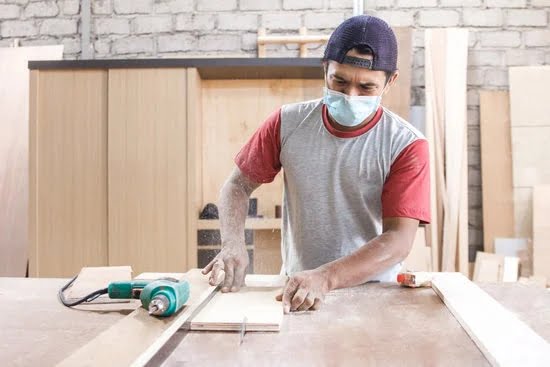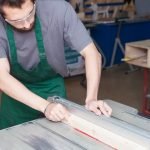What are OSHA’s woodworking machinery requirements? The Occupational Safety and Health Administration (OSHA) plays a crucial role in ensuring workplace safety and regulating the use of machinery in various industries. This article provides an in-depth overview of OSHA regulations specifically related to woodworking machinery, covering the types of machinery, safety features required, employee training, maintenance, common violations, and available resources for businesses.
OSHA is responsible for establishing and enforcing standards to ensure the safety and health of workers across different industries. When it comes to woodworking machinery, OSHA has specific regulations in place to minimize the risk of accidents and injuries. Understanding these requirements is essential for businesses that utilize woodworking equipment to maintain a safe working environment and comply with OSHA standards.
This article will delve into the types of woodworking machinery covered by OSHA requirements, the key safety features and guards necessary for compliance, as well as the employee training and certification needed for operating such machinery. Additionally, we will explore the importance of regular maintenance and inspection to uphold OSHA standards, common violations and penalties for non-compliance, as well as the support available for businesses to ensure adherence to regulations.
Stay tuned to gain a comprehensive understanding of OSHA’s woodworking machinery requirements and how they impact your business’s operations.
Overview of OSHA Regulations for Woodworking Machinery
The Occupational Safety and Health Administration (OSHA) is a federal agency that is responsible for ensuring safe and healthy working conditions in the United States. OSHA establishes and enforces regulations to protect workers from hazardous workplace conditions, including those related to woodworking machinery. Understanding OSHA regulations for woodworking machinery is essential for businesses to ensure compliance and maintain a safe work environment.
Types of Woodworking Machinery Covered by OSHA Requirements
OSHA regulations for woodworking machinery cover a wide range of equipment commonly used in woodworking operations. This includes table saws, band saws, planers, jointers, routers, drill presses, lathes, sanders, and more. It is important for employers to be familiar with the specific requirements for each type of machinery to ensure compliance.
Key Safety Features and Guards Required for Woodworking Machinery
One of the key aspects of OSHA regulations for woodworking machinery is the requirement for safety features and guards to be in place to protect workers from potential hazards. This may include blade guards, kickback devices, emergency stop buttons, fences, or other engineering controls designed to minimize the risk of injury while operating the equipment. Employers are responsible for ensuring that these safety features are properly installed and maintained.
Employee Training and Certification Requirements
In addition to having the appropriate safety features in place, employers must also provide training and certification for employees who will be operating woodworking machinery. Proper training ensures that workers understand how to use the equipment safely and are aware of potential hazards. It is important for employers to keep thorough records of employee training and certification as part of their compliance with OSHA requirements for woodworking machinery.
Understanding the Types of Woodworking Machinery Covered by OSHA Requirements
Woodworking machinery covers a wide range of equipment used in the woodworking industry, and OSHA has specific requirements for each type to ensure the safety and well-being of workers. Some of the most common types of woodworking machinery covered by OSHA regulations include table saws, band saws, jointers, planers, routers, and drill presses. Each type of machinery comes with its own set of hazards and risks, which is why OSHA has established guidelines to mitigate these dangers.
Table saws, for example, are one of the most commonly used woodworking machines and are responsible for a significant number of workplace accidents. As a result, OSHA requires table saws to be equipped with a riving knife or other similar device to prevent kickback.
Additionally, all woodworking machinery must have guards in place to protect workers from coming into contact with moving parts or sharp blades. OSHA also sets standards for noise levels produced by woodworking machinery in order to protect workers’ hearing.
It is essential for employers and workers alike to familiarize themselves with the specific requirements outlined by OSHA for each type of woodworking machinery they use. By understanding these requirements and taking proactive measures to meet them, businesses can create a safer working environment while avoiding potential violations and penalties.
Key Safety Features and Guards Required for Woodworking Machinery
Woodworking machinery can pose various risks to workers, including cuts, amputations, and even fatalities if not operated and maintained properly. This is why OSHA has specific requirements for key safety features and guards to be in place when using woodworking machinery.
Types of Safety Features and Guards
One of the key requirements set by OSHA for woodworking machinery is the presence of proper guards to protect workers from coming into contact with moving parts. This includes blade guards, fence systems, and automatic braking systems. These guards are designed to prevent accidental contact with the dangerous parts of the machinery, reducing the risk of serious injuries.
Lockout/Tagout Procedures
In addition to physical guards, OSHA also requires businesses to have lockout/tagout procedures in place when servicing or maintaining woodworking machinery. These procedures ensure that hazardous energy sources are isolated and rendered inoperative before any maintenance work is performed. This adds an extra layer of protection for workers and prevents unexpected machine start-ups.
Additional Safety Features
Other safety features mandated by OSHA for woodworking machinery include emergency stop buttons, kickback prevention devices, and adjustable work rest tables. These features are crucial in minimizing the risk of accidents and allowing workers to safely operate the machinery.
By ensuring that all these safety features and guards are in place and functional, businesses can significantly reduce the likelihood of workplace accidents related to woodworking machinery. Following OSHA’s requirements not only protects employees but also helps companies avoid costly penalties for non-compliance. Therefore, it is essential for employers to understand these requirements fully and implement them diligently.
Employee Training and Certification Requirements for Operating Woodworking Machinery
Woodworking machinery can pose significant hazards to workers if not operated properly. Therefore, it is crucial for employees to undergo thorough training and certification programs to ensure their safety when working with these machines. OSHA has established specific requirements for employee training and certification in relation to woodworking machinery, aimed at reducing the risk of workplace accidents and injuries.
Some of the key training and certification requirements set forth by OSHA include:
- Training on the proper operation of woodworking machinery, including how to start, stop, and adjust the equipment safely.
- Education on potential hazards associated with the use of woodworking machinery, such as kickback, entanglement, and flying wood chips.
- Instruction on the importance of using personal protective equipment (PPE) when operating woodworking machinery.
- Certification programs that evaluate an employee’s understanding of woodworking machinery safety protocols and procedures.
It is essential for employers to provide comprehensive training to all employees who will be working with or around woodworking machinery. By ensuring that workers are properly trained and certified to operate these machines, businesses can minimize the risk of accidents and promote a safer work environment.
Regular refresher courses and ongoing education about updated safety protocols are also important in maintaining compliance with OSHA regulations regarding employee training for operating woodworking machinery. Additionally, employers should emphasize the importance of following all safety guidelines outlined by OSHA to prevent workplace injuries and maintain a culture of safety within their organization.
Importance of Regular Maintenance and Inspection of Woodworking Machinery
Woodworking machinery, like all industrial equipment, requires regular maintenance and inspection to ensure safe and efficient operation. Failure to properly maintain and inspect woodworking machinery can lead to serious workplace accidents and injuries. This is why OSHA has specific requirements for the maintenance and inspection of woodworking machinery to protect the safety and health of employees.
To comply with OSHA regulations, businesses must establish a maintenance schedule for all woodworking machinery. This schedule should include regular inspections of the equipment to identify any potential hazards or malfunctions. Additionally, proper lubrication, adjustment, and repair of woodworking machinery should be conducted according to the manufacturer’s recommendations.
Here are some key maintenance and inspection tasks that businesses should incorporate into their woodworking machinery maintenance program:
- Inspecting all safety guards, including barrier guards, fixed guards, adjustable guards, and self-adjusting guards
- Checking for any loose or damaged components in the machinery
- Ensuring that emergency stop buttons are functioning properly
- Lubricating moving parts as recommended by the manufacturer
- Testing electrical components for wear or damage
By prioritizing regular maintenance and inspection of woodworking machinery, businesses can not only comply with OSHA requirements but also create a safer work environment for their employees. This proactive approach can help prevent accidents, reduce downtime due to equipment malfunctions, and ultimately save lives.
Remember that failure to comply with OSHA requirements for maintaining and inspecting woodworking machinery can result in serious consequences for businesses. In addition to putting employees at risk of injury or death, non-compliance with OSHA regulations can lead to costly fines and penalties. Therefore, it is crucial for businesses to prioritize the regular maintenance and inspection of their woodworking machinery.
Common Violations and Penalties for Non-Compliance With OSHA Woodworking Machinery Requirements
When it comes to OSHA woodworking machinery requirements, it is essential for businesses to understand the potential violations and penalties for non-compliance. One of the most common violations is the failure to provide adequate safety guards on woodworking equipment. OSHA mandates that all woodworking machinery must have proper guards in place to protect employees from potential hazards. Failure to comply with this requirement can result in hefty fines and penalties.
Another common violation is the lack of employee training and certification for operating woodworking machinery. OSHA regulations require employers to provide comprehensive training programs for employees who work with woodworking equipment. This includes proper usage, maintenance, and safety protocols. Employers who fail to meet these training requirements can face significant penalties from OSHA.
Failure to conduct regular maintenance and inspections of woodworking machinery is also a serious violation of OSHA requirements. Businesses are responsible for ensuring that all woodworking equipment is properly maintained and inspected according to OSHA standards. Neglecting this responsibility can lead to costly fines and penalties.
In order to avoid these violations and penalties, businesses must prioritize compliance with OSHA woodworking machinery requirements. By implementing comprehensive safety programs, providing necessary training, and conducting regular inspections, companies can ensure a safe working environment while avoiding potential legal repercussions.
| Violation | Potential Penalty |
|---|---|
| Failure to provide adequate safety guards on woodworking equipment | Hefty fines and penalties |
| Lack of employee training and certification for operating woodworking machinery | Significant penalties from OSHA |
| Failure to conduct regular maintenance and inspections of woodworking machinery | Costly fines and penalties |
Resources and Support Available for Businesses to Ensure Compliance With OSHA Regulations
Ensuring compliance with OSHA regulations for woodworking machinery is crucial for the safety of employees and the avoidance of hefty penalties. Fortunately, businesses have access to a variety of resources and support to help them meet OSHA requirements.
One key resource available to businesses is the OSHA website, which provides a wealth of information on woodworking machinery requirements, including detailed guidelines, training materials, and frequently asked questions. Additionally, businesses can reach out to their local OSHA office for support and guidance on implementing safety measures for woodworking machinery. Many offices offer free consultation services and can help businesses understand their specific requirements based on the type of woodworking machinery used.
In addition to these resources, many industry organizations and trade associations offer training programs, workshops, and webinars focused specifically on OSHA requirements for woodworking machinery. These resources can be invaluable for businesses looking to enhance their knowledge of safety regulations and ensure they are fully compliant. Furthermore, seeking out partnerships with other businesses in the industry can provide valuable insights and best practices for meeting OSHA requirements.
Overall, leveraging these resources and seeking out support from experts can greatly assist businesses in understanding and implementing the necessary measures to comply with OSHA regulations for woodworking machinery.
| Resource | Description |
|---|---|
| OSHA Website | Provides detailed guidelines, training materials, and FAQs related to woodworking machinery requirements |
| Local OSHA Office | Offers free consultation services and guidance on implementing safety measures |
| Industry Organizations/Trade Associations | Offer training programs, workshops, and webinars focused on OSHA requirements for woodworking machinery |
Conclusion
In conclusion, it is crucial for businesses to prioritize workplace safety and compliance with OSHA woodworking machinery requirements. The regulations set forth by OSHA are designed to protect workers from injuries and accidents related to the operation of woodworking machinery. By adhering to these requirements, businesses can create a safer work environment for their employees and mitigate the risk of costly fines and penalties for non-compliance.
Understanding the types of woodworking machinery covered by OSHA requirements is essential for businesses in the woodworking industry. It is important to recognize that various types of equipment, such as saws, lathes, routers, planers, and sanding machines, are subject to specific safety regulations outlined by OSHA. Employers must ensure that proper safety features and guards are in place on all woodworking machinery to minimize the risk of incidents or injuries.
Employee training and certification requirements for operating woodworking machinery should also be carefully considered. By providing comprehensive training programs and ensuring that employees are certified to operate specific equipment, businesses can significantly reduce the likelihood of accidents in the workplace.
Additionally, regular maintenance and inspection of woodworking machinery are critical to upholding safety standards and preventing potential hazards. Overall, prioritizing workplace safety not only benefits employees but also contributes to the long-term success and reputation of a business within the industry.

Hi everyone! I’m a woodworker and blogger, and this is my woodworking blog. In my blog, I share tips and tricks for woodworkers of all skill levels, as well as project ideas that you can try yourself.





